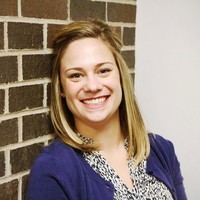Social distancing, masks and quarantines continue as the COVID-19 pandemic wears on. How are people with disabilities, like those who are deaf or blind, adapting in ways that fit their needs while still staying safe?
KRCC's Abigail Beckman spoke with Emily Shuman of the Rocky Mountain ADA Center for some insight.
On the biggest impacts to the deaf and blind community in the Pikes Peak region as this pandemic continues

One of the biggest questions we get asked is about the use of these masks. For people who are deaf or hard of hearing, being able to see a person's face is really vital to communication, whether they lipread or not. A lot of communication that a person who's deaf gets while they're using sign language comes from facial expressions. A lot of what we've seen there is wondering if there's an alternate sort of mask that can be used that's got a clear panel or that allows the person to keep their face safely covered, but still visible.
I would say for people who are blind early on in the pandemic, we did have somebody who reported that they went to a grocery store with their service animal and were basically told to go away because the grocery store couldn't find the time to provide a dedicated staff member to help them go through the store and find items that they needed. They were basically denied service.
"The pandemic is really bringing light to the fact that people with disabilities live their lives having to be creative and find alternate ways of doing things that are may be different from the way things are normally done." - Emily Shuman, Rocky Mountain ADA Center
On how the pandemic has shed light on instances where people with disabilities may not be accomodated fairly
What stands out to me is that now that everybody's honed in on the pandemic is you're seeing some of those barriers present themselves in different ways. There are always issues for people with disabilities when it comes to transportation. Before the pandemic, if you’re someone with a service animal, a lot of times your Uber or Lyft either is going to turn you away because they don't understand that it's your right to have the service animal in the car with you. That was a barrier in the past and still would be a barrier, but now we've added another level of discouraging the use of rideshares altogether.
Also, if Uber and Lyft are going to require the use of masks and you're someone who can't wear a mask because of a disability, that's just presented another barrier.
The Americans with Disabilities Act will celebrate its 30th anniversary at the end of the month. What more are you hoping to see specifically here in the in the Pikes Peak region?
I think the biggest difference is the Internet. The Internet did not exist back in 1990, at least not in the way it does now, specifically social media, which is such a huge part of the way that we live our lives and connect with each other, get information, share information. All of those things were developed kind of without the interest of people with disabilities in mind. So now what you're seeing is people having to go back and try to make it accessible on the back end. What I'm hoping to see in the future is to really have a lot more focus on accessible websites, accessible social media, because it seems like people with disabilities are really getting left behind with inaccessible digital communications.








